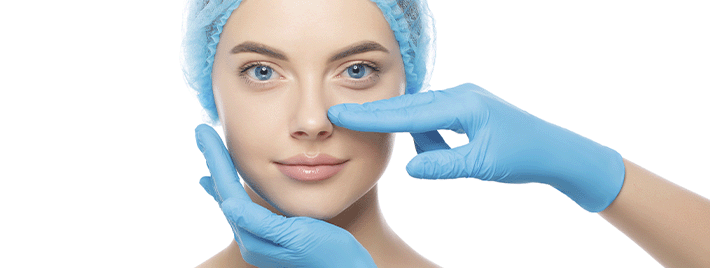Post Date: 1/13/2023

Deviated septum is defined as a curvature that causes difficulty in nasal breathing and can lead to sinus infections, which orrrr due to hereditary or subsequent impacts. Septoplasty is a surgical procedure to improve deviated septum, a condition in which the wall separating the two nostrils is not straight.
During the procedure, an incision is made inside the nostrils and the deviated septum is corrected and reshaped. In some cases, additional structures such as turbinates (small structures inside the nose that help moisturize and filter air) may also be replaced or removed to improve breathing. Septoplasty is performed under general anesthesia by specialist ENT doctors and takes approximately 1-2 hours. Recovery time varies according to the individual, but most patients can return to their normal activities within one or two weeks.
It is important to note that septoplasty is different from rhinoplasty, a surgical procedure used to change the shape or appearance of the nose. Rhinoplasty may also include the correction of a deviated septum, but the focus is primarily on the cosmetic aspect of the procedure.
Septoplasty treatment is primarily preferred to treat septum deviation, which can cause various symptoms. Difficulty breathing through the nose, nasal congestion or blockage, recurrent sinus infections, nosebleeds, facial or headaches, snoring, or sleep apnoea are problems that require septoplasty treatment.
Septoplasty also helps improve the symptoms of people with allergies and asthma, because a deviated septum can worsen health conditions by making it difficult for air to pass through the nasal passages. This can lead to inflammation and irritation. Septoplasty is often performed in combination with other procedures such as sinus surgery or rhinoplasty. This helps to optimize the outcome of the surgery and provide the patient with the best possible results.
Most individuals with a deviated septum snore or experience sleep apnoea. Septoplasty can help alleviate these symptoms, improving the quality of sleep and with it, the overall quality of life.
Septoplasty is usually recommended for individuals with a deviated septum that causes significant symptoms such as difficulty breathing through the nose, nasal congestion, recurrent sinus infections, nosebleeds, facial pain, or headaches. It is typically not recommended for individuals whose symptoms are mild and can be effectively managed with other treatments such as nasal sprays or other medications. Individuals with certain types of nasal polyps or tumors or who have had previous nasal surgery are also not good candidates for septoplasty. Individuals with certain medical conditions, such as uncontrolled diabetes, high blood pressure, or bleeding disorders, may not be suitable for the procedure due to the possibility of an increased risk of complications.
The best way to determine whether you would benefit from septoplasty is to consult an ear, nose, and throat specialist (ENT specialist) who can examine your nose, ask you questions about your symptoms, and recommend the best course of treatment.
After the procedure, your surgeon will place a nasal plug in your nose to help control bleeding and promote healing, and prescribe medication to manage pain or any discomfort.
Immediately after surgery, you may feel some swelling and bruising around your eyes and nose, as well as nasal congestion. Such complications are normal but usually resolve in a short time. You should avoid bending over for the first few days after surgery to reduce the risk of bleeding. Your surgeon will give you specific instructions on how to look after yourself and when to make your first postoperative visit. The inside of the nose should be moist to facilitate the healing process. For this reason, it is important that you regularly use the nasal spray or ointment prescribed by your doctor.
After the septoplasty operation, it is extremely unfavorable to lift heavy weights, start strenuous exercise activities, or perform any activity that may increase blood flow in the nose and cause bleeding or swelling.
The healing process is different for each patient, but in general, it takes a few weeks and it may take several months to fully observe the result of the surgery. It is important that you follow your surgeon's instructions carefully and let him/her know if you have any concerns about the healing process.
If you consider having rhinoplasty surgery, contact us right away to get a free consultancy service from Prof. Dr. Selçuk İnanlı.